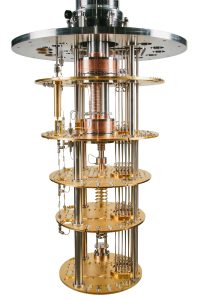
The test set-up saw the modified Paragraf GHS09CC device exposed to a 14T magnetic field. This was applied via an Oxford Instruments’ superconducting solenoid magnet. The temperature level was taken down below 100mK, using the newly released Proteox dilution refrigerator.
Normally under these harsh operating conditions, acquisition of field strength data would be impossible. The low temperatures involved would lead to quantum effects that would saturate the sensor. Even before reaching these extremes, other anomalies would impact upon sensor linearity, thereby making accurate measurements very difficult to achieve.
“Hall Effect sensors have not been able to offer mK operation until now,” says Paragraf’s Ellie Glananis, “The tests conducted by Oxford Instruments underline the quality of the graphene substrates we can fabricate for cutting-edge electronic systems, as well as our innate ability to tailor them as customer requirements dictate. There is no other cryogenic temperature Hall Effect sensor that is rated to these operational parameters, showing that we can really differentiate ourselves here.”
“Conventional Hall sensors can suffer carrier freeze-out at mK temperatures, and even if they could still function their heat dissipation is much too high,” says Benjamin Bryant Of Oxford Instruments, , “graphene sensors give us and our customers the opportunity, for the first time, to monitor high magnetic fields in-situ in ultra-low temperature experiments.”
High energy physics labs and other fundamental research establishments have previously had to rely on off the shelf cryo-rated Hall sensors (rated to 1.5K at the lowest) or expensive custom NMR probes. These generate a considerable amount of heat, and this has a detrimental influence on the ability to maintain a mK environment and therefore the results obtained.
In contrast, the Paragraf sensor generates 6 orders of magnitude less heat (dissipating nW rather than mW figures). Through optimisation of the constituent graphene, it can support linear operation – presenting customers with a ground-breaking sensing solution that is unmatched in terms of performance, data reproducibility and ease of calibration.
The Oxford Instruments Proteox dilution refrigerator was pivotal in these tests. It has the capacity to support precisely controlled temperatures over an expansive 10 mK to 30K range, even when subjected to very high magnetic fields. Competing dilution fridges, by comparison, can only cope with much narrower temperature ranges. It provides a flexible platform for addressing the scaling up of advanced quantum hardware solutions.
Paragraf’s mK capable sensors will pave the way for more advanced scientific instruments, with Oxford Instruments set to become one of the first customers in this exciting new area.